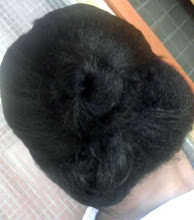They also explain it in terms of percentages, which explains why you might experience more of a skin tan using SPF 15 than SPF 30: SPF 15 blocks about 93 percent of UVB rays during this time. SPF 30 doesn’t block double the rays; it simply ups the ante to 97 percent, whereas SPF 50 takes it to 98 percent.
UVB is the chief culprit behind sunburn, while UVA rays, which penetrate the skin more deeply, are associated with wrinkling, leathering, sagging, and other light-induced effects of aging (photoaging).UVA: Ultraviolet “A” rays can penetrate deep into the skin. This leads to premature aging, or “photoaging” — fine lines, wrinkles, leathery skin and sun spots.
UVB: Ultraviolet “B” rays are superficial and cause sunburn. They are also responsible for the formation of melanoma (skin cancer).
Broad Spectrum: If a sunscreen is “broad spectrum,” it protects against both types of ultraviolet rays. You should only buy products that offer broad-spectrum protection.
First, no sunscreen, regardless of strength, should be expected to stay effective longer than two hours without reapplication. Thus is the struggle I have when a sunscreen has a white cast! It's so hard to reapply without looking ashy and you can imagine the faces of people when you are in town!
Any easy way to help get the amount needed on the skin is to apply your sunscreen twice. Apply a layer, let it dry, then apply a second layer. Don't rub your sunscreen too much when you apply it, one study found that vigorous rubbing actually reduced the SPF by 25%.
Sunscreens (both physical and chemical) don’t protect our skin by reflecting and scattering UV energy. Sunscreens attenuate the UV energy, absorbing it and turning it into less harmful energy – most often in the form of heat. Titanium dioxide and zinc oxide do reflect some of the UVA wavelengths, but they reflect much more in visible light spectrum, which is why they can leave a white-cast on the skin – micronization can help reduce this effect!
Sources
https://gearpatrol.com/2019/04/11/best-sunscreen-for-every-need/
https://kindofstephen.com/11-research-backed-tips-to-get-the-most-out-of/
https://kindofstephen.com/physical-vs-chemical-sunscreens-myths/



Comments
Post a Comment
Speak your mind; I love to hear from you!